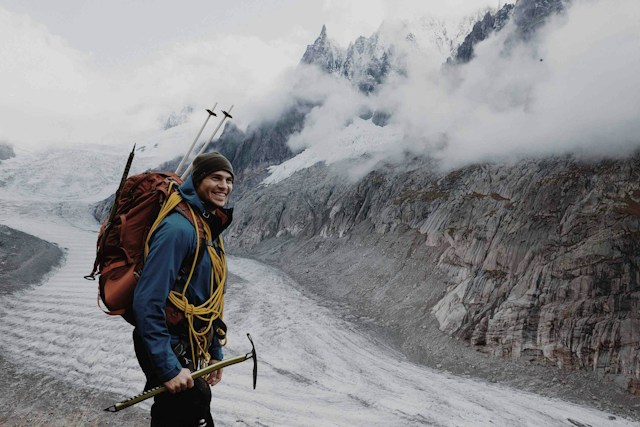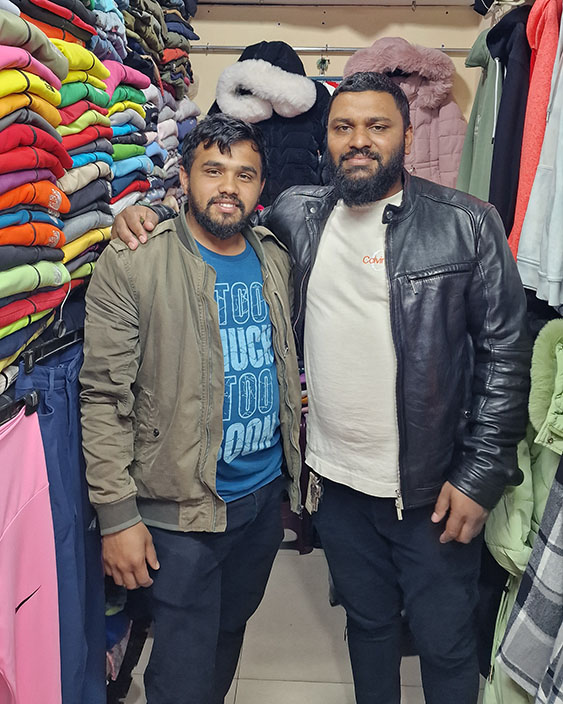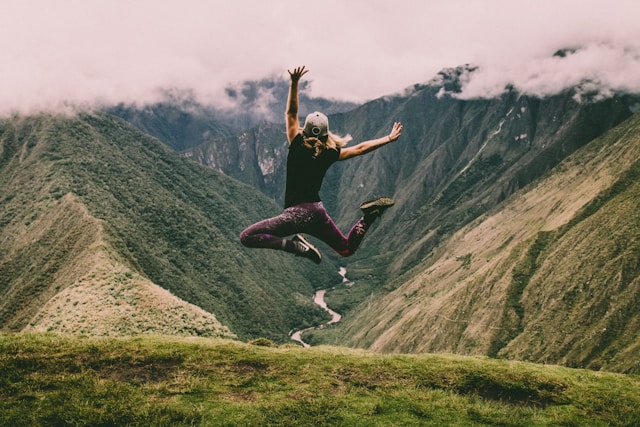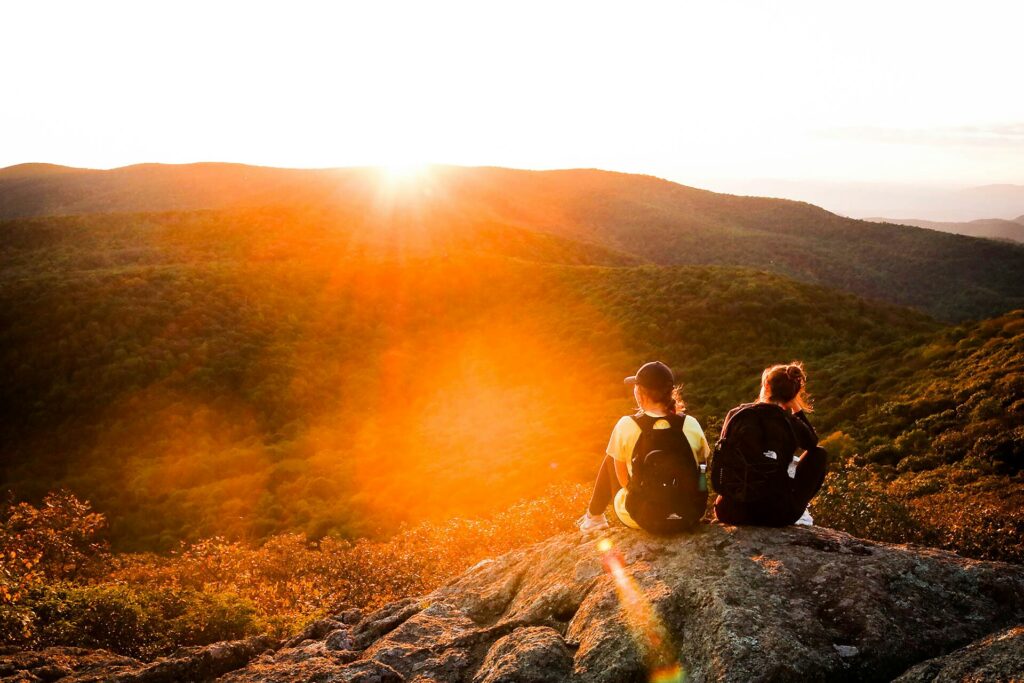On a recent trip to Sri Lanka, I scored BIG on hiking outfits. I paid less than $160 for hiking apparel that is worth no less than $600 elsewhere! The details of how this happened is just one example of the many tips I’ll be sharing on how to save money on hiking gear in this article.
Before we get started, let’s put things in perspective. You do not need the most expensive trendy products to survive and prosper in the wild. On several occasions during my time in Sri Lanka, I was truly humbled seeing how the locals were hiking. While I was wearing my not-so-cheap hiking boots struggling to make my way up a steep mountain, the locals were easily climbing the same treacherous terrain in flip-flops! There was also a lady, probably as old as my grandmother, who surpassed me and my wife with ease. She was actually BARE FOOT. Oh and none of the locals had Gore-Tex rain jackets or merino wool base layers. Some of them were actually wearing jeans!
Since not all of us are as tough as that old lady, we still need some clothing and gear to help us enjoy our hiking and protect us from the elements. So let’s discuss a few ways to make buying those items a little more affordable.
- Tips For How To Save Money On Hiking Gear
- 1. Don’t buy what you do not need
- 2. It’s okay to borrow gear
- 3. Consider renting gear
- 4. Buy second hand
- 5. Buy from discount websites & stores
- 6. Participate in gear swaps
- 7. Shop for factory sales
- 8. Wait for sales
- 9. Join your favorite brands’ newsletters
- 10. Be smart with your investments
- 11. Be okay with buying older models
- Final Thoughts For Spending Less On Hiking Gear
Tips For How To Save Money On Hiking Gear
Hiking and backpacking gear can be quite expensive. This is bad news for anyone who enjoys the outdoors, but does not have unlimited cash lying around in their bank account. But, there are always ways to avoid paying the hefty price tag of hiking gear.
1. Don’t buy what you do not need
It’s tempting to get carried away buying all the cool and trendy gear that hits the market. However, it’s always important to ask yourself whether you need an item before swiping your credit card. Always remember that the gear you buy will end up on your back and weigh you down on the trail. That’s an effective way to keep your bad shopping habits in check.
For example, if you never go hiking in the backcountry where there is no cellular service coverage, do you really need a satellite communication device? I think you’d be better off saving those few hundred bucks. Similarly, if you only ever go backpacking for the weekend, are you sure you need that 75L backpack or that 24-piece outdoor kitchen set? And when was the last time you were in a situation which required that fancy survival kit? I bet you cannot remember a single instance when that would’ve been “nice to have”.
2. It’s okay to borrow gear
I’ve never done it myself because I did not have outdoorsy friends I could borrow gear from when I first got started. If I did, you bet I would’ve at least considered it. In fact, offering to lend my friends the gear they needed the first few times I asked (begged?) them to go hiking was the only way I could convince them to drag their behind into the wild. It was much cheaper for them to go hiking this way.
3. Consider renting gear
If you’re visiting an area known to be a prime location for outdoor activities, you will likely find stores renting out gear. If you cannot find any local stores, most big brands such as REI (US), MEC (Canada), or Decathlon (UK and Europe) have gear rental programs that you can consider.
Renting is an excellent way to save money on hiking gear. If you’re planning to buy a big ticket item but are not sure if you’re going to like it or not, then renting it for your next trip is a cheap way to test it out. This is certainly worth considering when planning to purchase a tent or a sleeping bag for example.
On a similar note, you might go hiking in challenging terrain that requires specialized equipment. Unless you do this often, then you probably shouldn’t buy that gear. For instance, if alpine hiking is not your regular cup of tea, and you’re only going this one time, I would recommend you rent those crampons and ice axes rather than buy them!

4. Buy second hand
First off, let’s agree on one thing: buying second hand stuff does NOT make you cheap! I’ve been raised in a community back home where buying anything that isn’t brand new is a major social crime. This all changed when I moved to the Netherlands, where people pride themselves for this behavior – whether it’s for sustainability or cost saving. Literally everyone and their mother use Marktplaats to buy and sell anything and everything. Similarly, Vinted is also very popular throughout Europe if you’re looking for clothing (including hiking apparel) for a discounted price. In other parts of the world, Facebook Marketplace and eBay are also heavily used to score on quality gear for 30%-60% off the price of a new item.
Moreover, you can often find lightly used hiking gear in second-hand stores or thrift shops near you. Browse through their selection and you’ll often be rewarded with reputable brand items for a fraction of the price!
5. Buy from discount websites & stores
Back in my home country, there was a store chain called “Brands For Less”. They had almost anything and everything you can think of for your house or your wardrobe. The best part is that their collection was from excellent brands and the discounts were crazy – we’re talking 50% to 70% off the official listing price. I bought hiking pants, fleeces, base layers, and even a ski outfit that served me well for many years.
If you spend some time looking for similar stores near you, I’m pretty sure you’re going to find at least a couple (TJ Maxx is one example). Similarly, there are websites that offer crazy discounts on outdoor gear. Steep and Cheap, CampSaver and REI Outlet are a just a few examples where you can score good bargains. Many outdoor gear companies also offer an outlet section on their websites, so make sure you check those out when shopping for gear.
6. Participate in gear swaps
Depending on where you live, you can often find local outdoor groups on Facebook or online forums. In addition to organizing outdoor adventures, a lot of those facilitate swapping or trading gear.
7. Shop for factory sales
If you’re really into hiking, chances are you make it a point to travel to prominent hiking destinations. Very often, nearby towns would have streets lined with small shops that sell outdoor gear for cheap. It gets even better if you visit an area where there are factories that manufacture apparel and gear for popular brands. When factories over-produce, they dump their excess stock into nearby towns. Any items that do not pass quality control to be sold online or in showrooms also make its way into the small shops.
I’ve been lucky on a couple of occasions so far where I found myself in such places. Like I said in the introduction of this article, I got really good discounts a couple of months ago at the Bale Bazaar and nearby stores in Nuwara Eliya, Sri Lanka. My wife and I bought a bunch of fleeces, top quality hiking pants, and windbreakers for excellent prices. Similarly, back in 2014 I did one of the Annapurna trails in Nepal along with my local hiking group at the time. Before returning back home, we spent a couple of days in Kathmandu. We took the opportunity and bought a lot of great quality hiking gear and clothing. In addition to refreshing my outdoor closet, I bought trekking poles, gaiters, and an excellent North Face 30L backpack which I still own today!
A few of things to mention about these factory sales shops:
- Sellers will ALWAYS ask for a much higher price than they are willing to sell for. I managed to haggle with the sellers and get the items at 40% – 70% of their initial asking price.
- Make sure you thoroughly check the items for any imperfections. Some of them have very minor cosmetic issues, but some of them were rejected because of significant damage. For example, one of the pants I checked out had multiple holes on the back, and the zipper of a windbreaker did not work properly.
- There will often be counterfeit products usually manufactured for the local market. Some sellers will be upfront about it, but others will try to sell you the fake items for the price of the genuine ones. Learn how to verify a product is wind or waterproof and make sure you test before you buy.
- Sizes on the tags are not reliable. If you’re buying clothes, try them out before you purchase.

8. Wait for sales
If you can be patient and avoid impulsive shopping (I know, it can be challenging sometimes), you will very likely be rewarded with great discounts. Every item that gets listed on your favorite brand’s website will inevitably be discounted at some point. Most companies put their winter gear on sale in spring, and their summer gear in fall. Also, you should keep an eye for good bargains around Black Friday.
9. Join your favorite brands’ newsletters
In addition to being notified about upcoming sales, subscribing to your favorite brands’ email lists can be useful in several ways. All brands advertise their new products through email to their loyal customers first. Some of those brands offer “early bird discounts” (or something along those lines) that allow you to get your hands on the latest (and greatest?) gear for cheaper. Moreover, newsletter emails often include special deals or coupon codes that offer some savings.
10. Be smart with your investments
I know I’ve mentioned the word “brand” over and over throughout the article so far. However, for the most part, I’m a proponent of shopping for materials, not brand names. The only 3 items I believe you could (and probably should) pay a premium for and buy from reputable brands are footwear, backpacks and shelters. Everything else is optional and largely depends on your budget and values.
Especially when it comes to clothes, I look at the label and make sure I’m comfortable with the materials. I’m not going to buy a base layer made up of cotton no matter who is selling it. I’ll always choose a synthetic blend or merino wool instead. Also, I can never justify spending $80 – $250 on a Patagonia fleece. I’d be happy to pick up one for $10-$30 from Decathlon or even some unbranded piece instead. On the other hand, I paid a little over $170 for my Salomon boots last year, and I still believe it’s one of my best purchases. That’s an investment I’m happy to splurge on.
11. Be okay with buying older models
More often than you think, newer versions of products come with a hefty price tag that is not worth the extra money. The good news, however, is that newer releases usually push down the prices of older models. Unless the newer model has introduced revolutionary features, this is a great opportunity to grab the older model at a discount. I can assure you, in the vast majority of cases, you’d be just fine purchasing the previous model. You won’t be missing out on much.

Final Thoughts For Spending Less On Hiking Gear
Good quality hiking gear often does not come cheap. However, with some research, patience, and investment of your time and effort, you can make purchasing outdoor gear a lot more affordable. Moreover, it’s important to be pragmatic and keep your expectations in check. You can still have great hiking experiences with basic gear.
Do you have any other tips to help us save money on hiking gear? Share them down in the comments!
